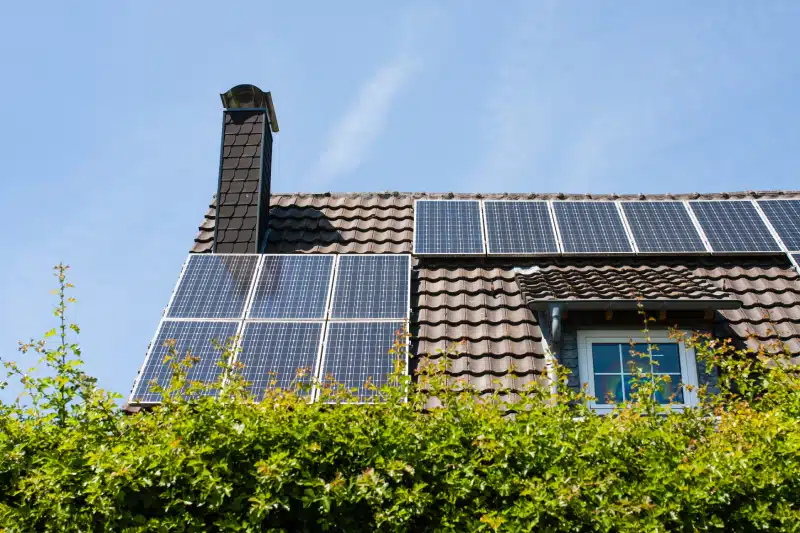Solar installation has emerged as a sustainable and cost-effective solution for meeting energy needs while reducing carbon footprints. With advancements in technology and increasing environmental awareness, more homeowners and businesses are turning to solar energy as a viable alternative to traditional power sources. In this article, we’ll explore the intricacies of solar installation, its benefits, types, installation process, and much more.
Understanding Solar Energy
What is Solar Energy?
Solar energy is derived from the sun’s radiation, which is harnessed using photovoltaic (PV) cells to generate electricity. These cells, commonly known as solar panels, convert sunlight into usable energy through a process called the photovoltaic effect.
How Solar Panels Work
Solar panels consist of multiple solar cells made of semiconductor materials like silicon. When sunlight strikes these cells, it excites electrons, creating an electric current. This direct current (DC) is then converted into alternating current (AC) by inverters, making it compatible with standard electrical systems.
Benefits of Solar Installation
Environmental Benefits
Solar energy is a clean and renewable source of power, producing no greenhouse gas emissions or air pollutants during operation. By reducing reliance on fossil fuels, solar installation helps mitigate climate change and promotes a healthier environment.
Cost Savings
Investing in solar installation can lead to significant long-term savings on electricity bills. With solar panels generating electricity from sunlight, homeowners and businesses can offset or even eliminate their reliance on grid power, thereby reducing monthly utility expenses.
Energy Independence
Solar installation provides greater energy independence by decentralizing power generation. With solar panels installed on-site, individuals and communities can become less reliant on centralized utility companies, thereby enhancing energy security.
Types of Solar Installation
Grid-Tied Systems
Grid-tied solar systems are connected to the utility grid, allowing excess electricity generated by solar panels to be fed back into the grid for credits or compensation. These systems provide stability and reliability, ensuring uninterrupted power supply even during periods of low sunlight.
Off-Grid Systems
Off-grid solar systems operate independently of the utility grid, relying solely on solar energy and battery storage for power. These systems are ideal for remote locations or areas where grid connection is impractical or cost-prohibitive.
Hybrid Systems
Hybrid solar systems combine elements of grid-tied and off-grid systems, offering the flexibility of both. These systems incorporate battery storage to store excess energy for use during times of low sunlight or grid outages, providing backup power when needed.
Factors to Consider Before Solar Installation
Location
The geographic location and orientation of a property play a crucial role in determining its solar potential. Areas with ample sunlight and minimal shading are ideal for solar installation, maximizing energy generation.
Roof Condition
The condition and angle of the roof are important considerations for solar installation. A sturdy roof with sufficient space and proper orientation can accommodate solar panels efficiently, ensuring optimal performance and longevity.
Energy Usage
Assessing current energy usage helps determine the size and capacity of the solar system needed to meet specific needs. Understanding energy consumption patterns enables better design and customization of solar solutions.
Budget
Setting a realistic budget is essential for planning solar installation. While upfront costs may seem significant, long-term savings and return on investment make solar energy a financially viable option for many homeowners and businesses.
The Solar Installation Process
Site Evaluation
The first step in solar installation involves a thorough site evaluation to assess solar potential, roof suitability, and energy needs. Experienced professionals conduct on-site inspections and analysis to determine the feasibility of solar installation.
Design Phase
Once the site evaluation is complete, solar designers create customized system designs tailored to the specific requirements of the property. Factors such as roof layout, shading, and energy goals are taken into account during the design phase.
Permitting
Obtaining necessary permits and approvals is a crucial step in the solar installation process. Local building codes and regulations vary, and proper permitting ensures compliance and safety throughout the installation.
Installation
With permits secured and designs finalized, installation crews begin the process of mounting solar panels on the roof or ground. Wiring and electrical components are carefully installed to connect the solar system to the property’s electrical infrastructure.
Inspection
After installation is complete, the system undergoes thorough inspection by local authorities or certified inspectors. Inspections verify compliance with building codes, safety standards, and system performance requirements.
Choosing a Solar Installation Provider
Researching Providers
When selecting a solar installation provider, it’s essential to research and compare multiple companies. Look for experienced professionals with a proven track record of successful installations and satisfied customers.
Reading Reviews
Reading customer reviews and testimonials can provide valuable insights into the quality of service and customer satisfaction levels. Look for feedback on installation experience, system performance, and ongoing support.
Comparing Quotes
Obtain quotes from multiple solar providers to compare pricing, warranties, and system features. Consider factors such as equipment quality, installation expertise, and long-term service and support when making your decision.
Maintenance and Upkeep of Solar Systems
Cleaning Panels
Regular cleaning and maintenance help optimize solar panel performance and efficiency. Removing dirt, debris, and any shading obstructions ensures maximum sunlight absorption and energy generation.
Monitoring Performance
Monitoring system performance allows homeowners and businesses to track energy production, detect issues, and optimize efficiency. Many solar providers offer monitoring tools and software for real-time performance tracking.
Repair and Replacement
In the event of damage or malfunction, prompt repair and replacement of components are essential to maintain system reliability and performance. Most solar installations come with warranties covering equipment and workmanship.
Government Incentives for Solar Installation
Tax Credits
Federal and state governments offer tax credits and incentives to encourage solar installation and promote renewable energy adoption. These incentives can offset a significant portion of the upfront costs associated with solar projects.



